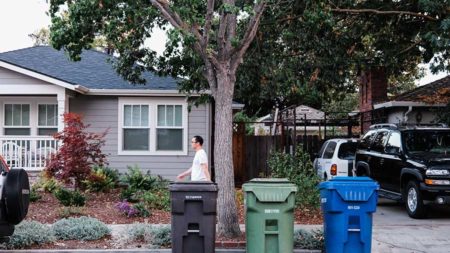Ever wonder how much we spend on average on holidays and special occasions? We’ve collected the data to find out.

It’s probably no surprise that we tend to spend more during the second half of the year. Thanks to Black Friday and Christmas, retail shopping goes into high gear.
Of course, we know that holidays aren’t the only time of the year for spending. There are also other special occasions and life events, like weddings and graduations, that we’ll pull out our wallets for.
But what are the average costs of these special occasions? How do they add up?
We were curious, too—so we’ve rounded up the latest data on how these special times break down financially. Here’s a look at the average amount spent on each occasion.
Valentine’s Day
Only 51% of Americans reported plans to celebrate Valentine’s Day in 2019, a slight decrease from 55% the previous year. However, in spite of the lower share of celebrants, the average spending per person rose by 13%.
Specifically, Americans spent an average of $161.96 for Valentine’s Day gifts in 2019. Total spending for the holiday across the U.S. increased by 6% from the previous year, to a record-breaking total of $20.7 billion. (The previous record was $19.7 billion, set in 2016.)
Fourth of July
Americans spent about $6.9 billion celebrating the Fourth of July in 2018. Those who planned a cookout or picnic averaged $75.35 per person, but other expenses include fireworks, travel out of town, and patriotic decorations for the occasion.
Halloween
Here’s one fall holiday that might catch you off-guard in terms of spending. For Halloween 2021, Americans are expected to spend an all-time high of $10.14 billion—a nearly 26% increase from the previous year’s number of $8.05 billion.
These numbers reflect changed attitudes toward the COVID-19 pandemic, and are closer to pre-pandemic levels:
- The average consumer is expected to spend $102.74.
- Halloween spending is highest among people between ages 35 and 44, with an average of $149.34.
- The age group with the lowest anticipated spend is 65+, with an average of $57.07.
- 65% of consumers plan to celebrate Halloween in 2021.
- 25% plan to throw or attend a party, up from 22% in 2020. In 2019, this number was 32%.
- 66% plan to hand out candy, up from 62% in 2020. In 2019, this number was 69%.
Black Friday
Black Friday is no longer just a 24-hour event—it’s more of a long weekend, beginning with Thanksgiving and ending with Cyber Monday.
According to Deloitte, the average shopper spent $448 during this period in 2021. This was a 12% increase from the previous year, and also surpassed pre-pandemic spending levels.
Christmas
For the 2021 holiday season, the National Retail Federation found that people plan on spending about $998 on decorations, food, candy, and gifts. Perhaps this number is a little generous, though, as Gallup reports $837.
Weddings
Not everyone gets married, and not even all those that do opt to host a wedding ceremony and/or reception. Regardless, the cost of this particular life event is traditionally a big one.
According to The Knot’s annual Real Weddings Study, the average wedding in the U.S. cost:
- 2014: $29,858
- 2015: $32,641
- 2016: $35,309
- 2017: $33,391
- 2018: $33,931
- 2019: $28,000
- 2020: $19,000
Because of the COVID-19 pandemic, 2020 weddings notably saw a significant drop from the previous year.
In a 2021 survey by 4over, 63% of respondents expected to spend less than $15,000 on their wedding. This lower cost may be because of a smaller wedding—76% of respondents planned on a guest list under 150 people, with 105 as the average number.
How about spending as a wedding guest?
The results of a study by Bankrate found that guests attending the wedding of a distant friend or relative spend an average of $372. However, for closer friends and relatives, they generally spend more, with an average of $628.
Bachelor and Bachelorette Parties
Bachelor and bachelorette parties aren’t created equal. Interestingly, bachelor parties tend to cost more on average—a 2019 study from WeddingWire found that bachelor party attendees spent an average of $1,044 compared to bachelorette attendees’ $708.
Of course, this cost varies based on the length of the bachelor and bachelorette party. Here are the differences:
- Bachelor parties’ average cost by length of trip
- 1 day: $814
- 2 days: $841
- 3 days: $1,144
- 4 days: $1,301
- 5 days: $1,362
- Bachelorette parties’ average cost by length of trip
- 1 day: $317
- 2 days: $579
- 3 days: $773
- 4 days: $906
- 5 days: $1,900
Divorce
On a less celebratory note (or not, depending on the person), divorce can also rack up quite the bill. The average cost of a divorce in the U.S. is roughly $15,000 per person, although it may be considerably cheaper if uncontested.
Graduation
For high school and college graduates alike, the average gift-giver spent $119.44 on graduation presents in 2021.
The most common gifts? Cash, cards, and gift cards.
Conclusion
When you take weddings, divorces, and graduations out of the question, the holidays alone account for well over a thousand dollars of spending over the course of the year. That is, if you’re spending close to the average for each occasion.
Were any of these numbers higher or lower than you expected? How much do you typically spend on these holidays and special occasions?





